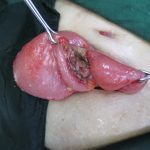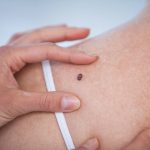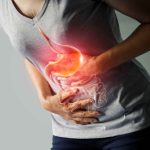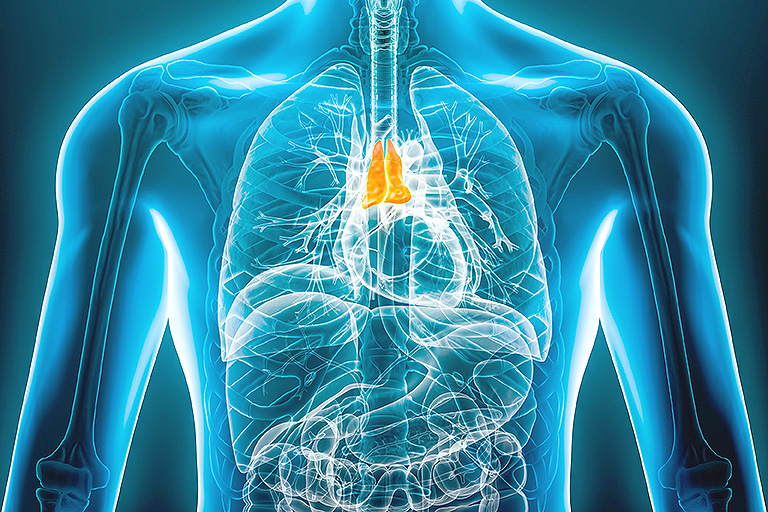
The mediastinum is the area in the centre of the chest, between the lungs. It is pronounced media-sty-num. Mediastinal germ cell tumours are a type of tumour that grow in the mediastinum. They develop in a type of cell called germ cells.
There are different types of mediastinal germ cell tumours. Some mediastinal germ cell tumours are non cancerous (benign).
Your treatment depends on what type of mediastinal germ cell tumour you have. Treatment options include surgery and chemotherapy.
What are mediastinal germ cell tumours?
Germ cell tumours develop in germ cells. These are the cells in the body that develop into sperm and eggs. Germ cell tumours most often develop in the ovary or testicle because this is where most germ cells are.
But germ cells can sometimes be left behind in other parts of the body from when you developed in the womb. So these tumours can develop anywhere in your body where there are germ cells.
Germ cell tumours that grow outside the ovary or testicle are very rare. Doctors call them extragonadal germ cell tumours (EGGCT). The mediastinum is the most common place for extragonadal tumours in adults.
The mediastinum is the area in the centre of the chest, between the lungs. It contains the:
- heart
- windpipe (trachea)
- food pipe (oesophagus)
- large main blood vessels
- the lymph nodes that surround the heart
Doctors aren’t certain how germ cell tumours develop in the mediastinum. There are some theories about how the cells get outside the testicle and ovary.
These include the following. The cancer develops:
- from very early cells that became misplaced during our development in the womb
- in the testicle or ovary and spread at a very early stage, but the original cancer has either disappeared or is too small to find
These tumours are much more common in males than females.
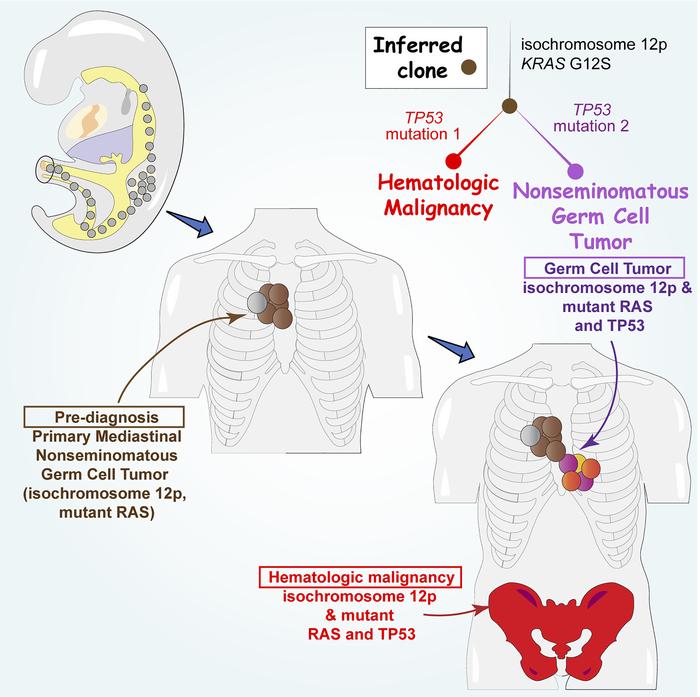
Types of mediastinal germ cell tumours
Doctors use different names to describe the different types of germ cell tumours. The name describes what the tumour looks like under the microscope.
Some tumours are non cancerous (benign). And some are cancerous (malignant).
Benign germ cell tumours include mature teratomas and dermoid cysts.
Cancerous germ cell tumours are split into 2 main groups:
- seminoma germ cell tumours (in females these are called dysgerminomas)
- non seminoma germ cell tumours (in females these are called non dysgerminomas)
Cancerous non seminoma germ cell tumours include:
- immature teratomas
- yolk sac tumours
- choriocarcinomas
- embryonal carcinomas
- polyembryomas
- gonadoblastomas
Symptoms of mediastinal germ cell tumours
Many people with a non cancerous (benign) tumour in the mediastinum don’t have any symptoms. The doctor might spot the tumour on a chest X-ray you had for another reason.
Most people with a cancerous mediastinal tumour have symptoms which might include:
- shortness of breath
- pain in the chest
- a cough
- raised temperature
- weight loss
- hoarse voice
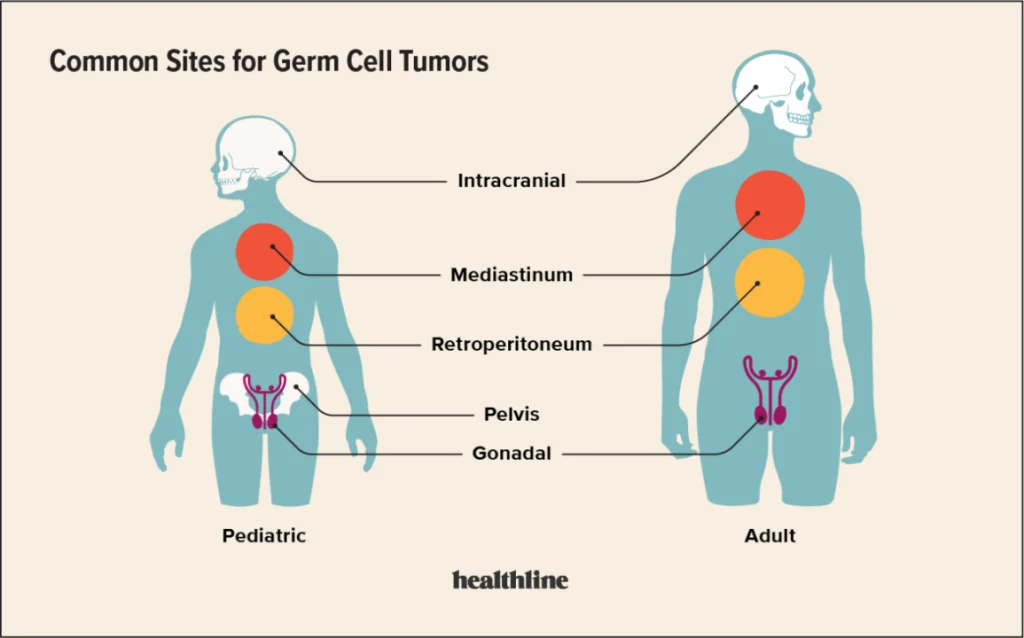
Test to diagnose mediastinal germ cell tumours
Doctors use various tests to diagnose mediastinal germ cell tumours. These might include:
- a chest X-ray
- blood tests to check for substances called tumour markers
- a mediastinoscopy – this test uses a camera to look in your chest and take tissue samples (biopsies)
- a CT scan
- an ultrasound scan of the ovaries or testicles to check for signs of cancer
- an MRI scan
Tumour markers
Germ cell tumours can make the following tumour markers:
- alpha feta protein (AFP)
- human chorionic gonadotrophin (HCG)
Not all germ cell tumours make these tumour markers. You could have a cancer without raised marker levels. Raised levels are more common in some types of germ cell tumours than others.
Your doctor will also do a blood test to measure your LDH level (lactate dehydrogenase).
You have these blood tests during and after your treatment. Doctors use the levels of these markers to:
- help stage your cancer
- show how well treatment works
- look for signs of the cancer coming back
Other tests
You might have a test to look for antibodies in your blood, if you haven’t had a biopsy. This looks for acetylcholine receptor binding (AChR) antibody.
Treatment options for mediastinal germ cell tumours
Treatment might include chemotherapy or surgery, or a combination of these treatments. It depends on what type of germ cell tumour you have.
The 3 main types of mediastinal germ cell tumours are:
- non cancerous (benign) mediastinal teratoma
- non seminoma or non dysgerminoma
- seminoma or dysgerminoma
Treatment for non cancerous (benign) mediastinal teratoma
Some teratomas can be non cancerous (benign). They are called mature teratomas. They tend to grow slowly and might be diagnosed by chance before you have any symptoms.
You have surgery to remove non cancerous (benign) teratomas. These tumours can be very large. This is often major surgery due to the position of the tumour.
You don’t usually have any other treatment. Chemotherapy and radiotherapy don’t work very well for mature teratomas.
Treatment for mediastinal non seminoma or non dysgerminoma
The main treatments are:
- chemotherapy
- surgery
Chemotherapy uses anti cancer (cytotoxic) drugs to destroy cancer cells. It is the most common treatment for these germ cell tumours.
You usually have a combination of chemotherapy drugs. You might have:
- BEP – this stands for the chemotherapy drugs bleomycin, etoposide and cisplatin
- VIP – this stands for etoposide, ifosfamide, cisplatin
After chemotherapy, you usually have a scan and more blood tests. This is to check how well the treatment has worked. The tumour may shrink away altogether.
You might have surgery if there is any sign that the cancer is still there after chemotherapy.
During the operation, the surgeon removes any cancer left behind. They send this to the laboratory, where a specialist examines it.
The type of surgery depends on where the remaining tumour is. And whether it is close to any important body structures such as main blood vessels. Your surgeon will be able to explain exactly what is involved if you need an operation.
Your doctor might consider further chemotherapy if there is still cancer left behind .
Treatment for mediastinal seminoma or dysgerminoma
The main treatments are:
- chemotherapy
- surgery
Chemotherapy uses anti cancer (cytotoxic) drugs to destroy cancer cells. It is the most common treatment for these germ cell tumours. Rarely, your doctor might suggest radiotherapy if you’re unable to have chemotherapy treatment.
You usually have a combination of chemotherapy drugs. The most common type is BEP. This stands for the chemotherapy drugs bleomycin, etoposide and cisplatin. The treatment can get rid of the tumour completely for some people.
After chemotherapy, you usually have a scan and more blood tests. This is to check how well the treatment has worked. The tumour may shrink away altogether.
If doctors can still see tumour on your scan
Your doctor is likely to suggest that they monitor you if the remaining area is smaller than 3cm. This is to see if the cancer grows again. They might call this observation.
You doctor might monitor you if the remaining cancer is larger than 3cm. Or they might suggest:
- a PET-CT scan
- taking a sample (biopsy)
- surgery to remove the remaining cancer
The main treatments
Surgery
The type of surgery you have depends on:
- where your tumour is in the chest and whether it is close to any important structures such as major blood vessels, your heart or your lungs
- the size of your tumour
Surgery for mediastinal germ cell tumour is a major operation. You might have an operation called:
- a thoracotomy
- a sternotomy
- a hemiclamshell incision – this combines a thorocotomy and a sternotomy
You might have:
- open surgery
- keyhole surgery
Most people have open surgery.
Open surgery
Thoracotomy
Your surgeon makes a cut that runs around the side of the chest. Sometimes the cut may only be a few centimetres long. But it can also be longer and run from under the nipple around to your back under the shoulder blade.
Sternotomy
Your surgeon makes a cut in the front of your chest. They cut through the breast bone (sternum). The cut runs from the base of the neck down to the top of your abdomen.
Keyhole surgery
Keyhole surgery can remove small tumours. The medical name for this operation is video assisted thoracoscopic surgery (VATS). The surgeon makes 1, 2 or 3 small cuts on the side of your chest. They use a long, bendy tube called a thoracoscope.
The thoracoscope connects to a fibre optic camera. This shows pictures of the inside of the chest on a video screen. The surgeon puts the surgical instruments into the other cuts to remove the tumour.
Chemotherapy
You usually have a combination of drugs to treat germ cell tumours. The most common types of chemotherapy drugs are:
- bleomycin, etoposide and cisplatin (BEP)
- etoposide and cisplatin (EP)
- etoposide, ifosfamide, cisplatin (VIP)
Check the name of the chemotherapy treatment with your doctor or nurse. Then you can find out about it on our A to Z list of cancer drugs.
Follow up
After treatment, you will have regular check ups. And you have tests to check for signs that the cancer is coming back.
Tests will include chest X-rays, CT scans and blood tests to check for any changes in the level of the tumour markers.

